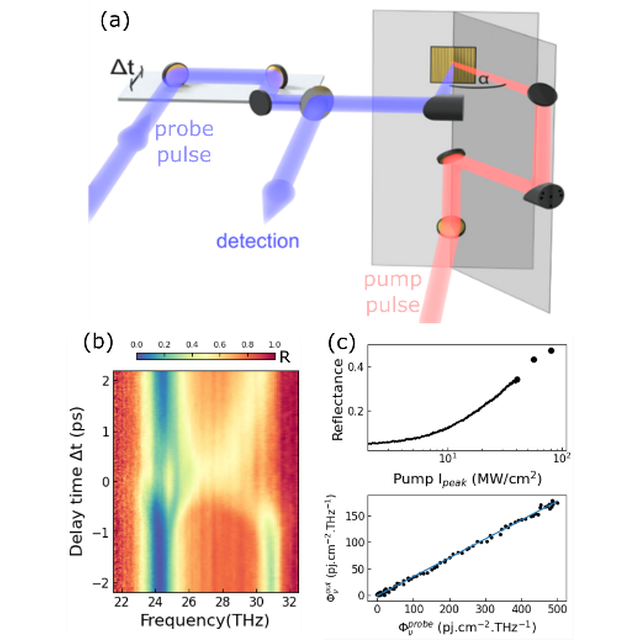Using ultra-fast mid-infrared pump-probe spectroscopy, physicists from the Center for Nanosciences and Nanotechnologies (C2N, Université Paris-Saclay / CNRS), in collaboration with researchers from University Regensburg (Germany) and the Italian CNR (Trento and Trieste) have demonstrated that intersubband polaritons can undergo stimulated coherent scattering.
Intersubband polaritons are hybrid light-matter states stemming from the strong coupling of an intersubband transition with the quantized electro-magnetic modes of a microcavity. They usually occur at mid-IR and THz wavelengths. More than a decade ago, they were theoretically described as bosonic quasi-particles that can undergo final-state stimulation and condensation.
A European consortium led by a team of C2N scientists, including researchers from the university of Regensburg in Germany, and the universities of Trento and Trieste in Italy, has achieved the first demonstration of final state stimulation of intersubband polaritons at mid-IR wavelengths. Several key developments have made possible this experimental tour-de-force. The development of dispersive micro-cavities operating in the mid-IR has allowed the exploration of the polariton-polariton scattering process. Furthermore, an ultrafast pump-probe experimental set-up, specifically developed for the task, has been key to explore the scattering process in the regime of final state stimulation. In such regime the scattering towards the final state is enhanced by the density of quasi -particles at such state.
This experimental demonstration constitutes one major step towards the development of low threshold coherent emitters at these mid-IR wavelengths, along with the potential demonstration of Bose-Einstein condensation of these hybrid quasi-particles arising in semiconductor heterostructures.
References
Intersubband Polariton-Polariton Scattering in a Dispersive Microcavity
M. Knorr1, J. M. Manceau2, J. Mornhinweg1, J. Nespolo3, G. Biasiol4, N. L. Tran2, M. Malerba2, P. Goulain2, X. Lafosse2, M. Jeannin2, M. Stefinger1, I. Carusotto3, C. Lange5, R. Colombelli2, and R. Huber1
Phys. Rev. Lett. 128, 247401 (2022)
DOI : 10.1103/PhysRevLett.128.247401
1Department of Physics, University of Regensburg, 93040 Regensburg, Germany
2Centre de Nanosciences et de Nanotechnologies (C2N), CNRS, Université Paris Saclay, 91120 Palaiseau, France
3INO-CNR BEC Center and Dipartimento di Fisica, Universita di Trento, I-38123 Povo, Italy
4Laboratorio TASC, CNR-IOM, Area Science Park, 34149 Basovizza, Trieste, Italy
5Department of Physics, TU Dortmund University, 44227 Dortmund, Germany
Contacts : Jean-Michel Manceau, Raffaele Colombelli, CNRS Researchers at C2N
Figure 1 - Caption: (a) Schematic representation of the experimental ultrafast pump-probe set-up. (b) Color map of the probe pulse reflectance as a function of the delay with the pump pulse. One sees the strong change of reflectance around zero delay. (c) Pump intensity dependence of the scattered light (top). Probe intensity dependence of the scattered light, attesting of the bosonic final state stimulation.









